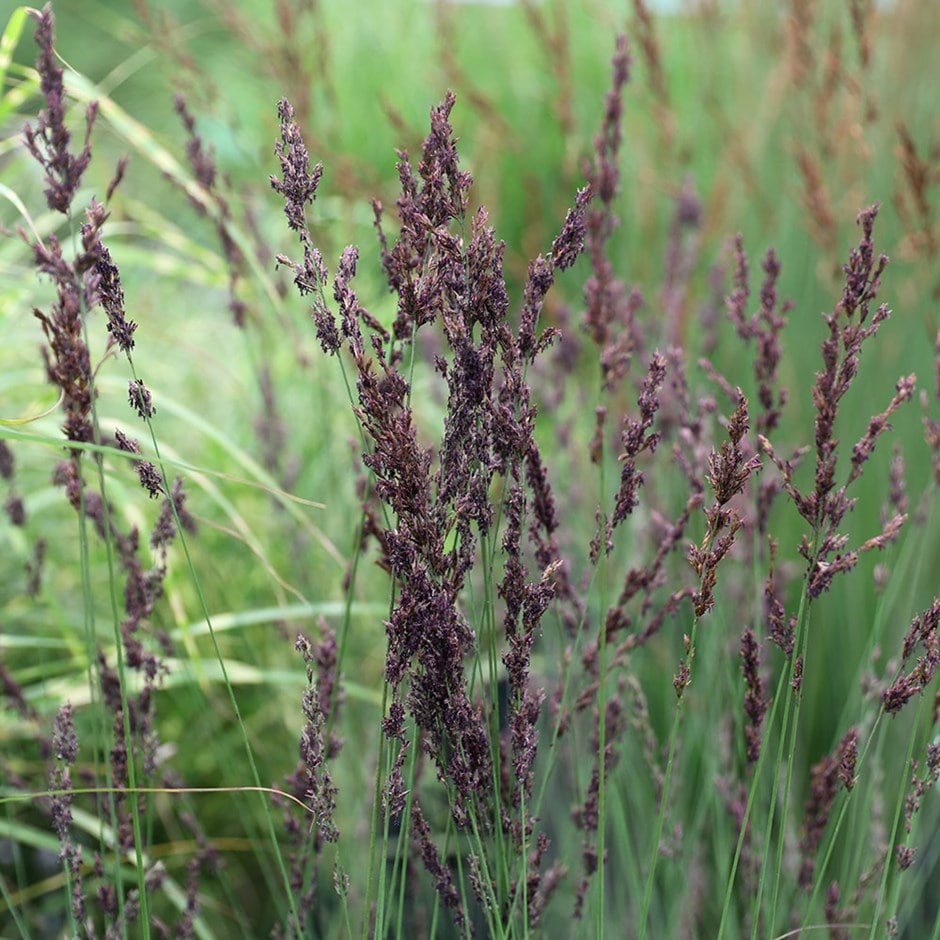Molinia caerulea subsp. caerulea 'Edith Dudszus'
purple moor grass
- 9cm pot
- £12.99
- sold out
- 3 × 9cm pots
- £29.99 £10.00 each
- sold out
Delivery options
- Standard £5.99
- Position: full sun or partial shade
- Soil: moderately fertile, moist but well-drained soil
- Rate of growth: average
- Flowering period: July to September
- Hardiness: fully hardy
Compact and upright in habit, this ornamental grass forms neat clumps of narrow green leaves from which wiry, dark purple flower stems rise through summer. The airy seedheads appear in shades of purple-brown, creating a delicate vertical accent among lower-growing perennials.
In autumn, the foliage of Molinia caerulea subsp. caerulea 'Edith Dudszus' turns attractive yellow-orange before dying back for winter. Purple moor grass combines well with plants like Achillea and Geranium. Low-maintenance, once established, and easy to grow, it brings texture, movement and seasonal interest to borders or naturalistic, prairie planting schemes.
In autumn, the foliage of Molinia caerulea subsp. caerulea 'Edith Dudszus' turns attractive yellow-orange before dying back for winter. Purple moor grass combines well with plants like Achillea and Geranium. Low-maintenance, once established, and easy to grow, it brings texture, movement and seasonal interest to borders or naturalistic, prairie planting schemes.
Plant Molinia in moist but well-drained soil in full sun or partial shade. It grows best in acidic to neutral conditions and appreciates a spot that doesn’t dry out in summer. Avoid very dry or overly rich soils, which can cause the plant to flop.
Once established, it's low maintenance. Cut back the dead foliage to ground level in late winter before new growth appears. Plants in more exposed garden settings may benefit from shelter from strong winds. It can be left to form natural clumps or divided every few years in spring if needed to maintain vigour.
Once established, it's low maintenance. Cut back the dead foliage to ground level in late winter before new growth appears. Plants in more exposed garden settings may benefit from shelter from strong winds. It can be left to form natural clumps or divided every few years in spring if needed to maintain vigour.
